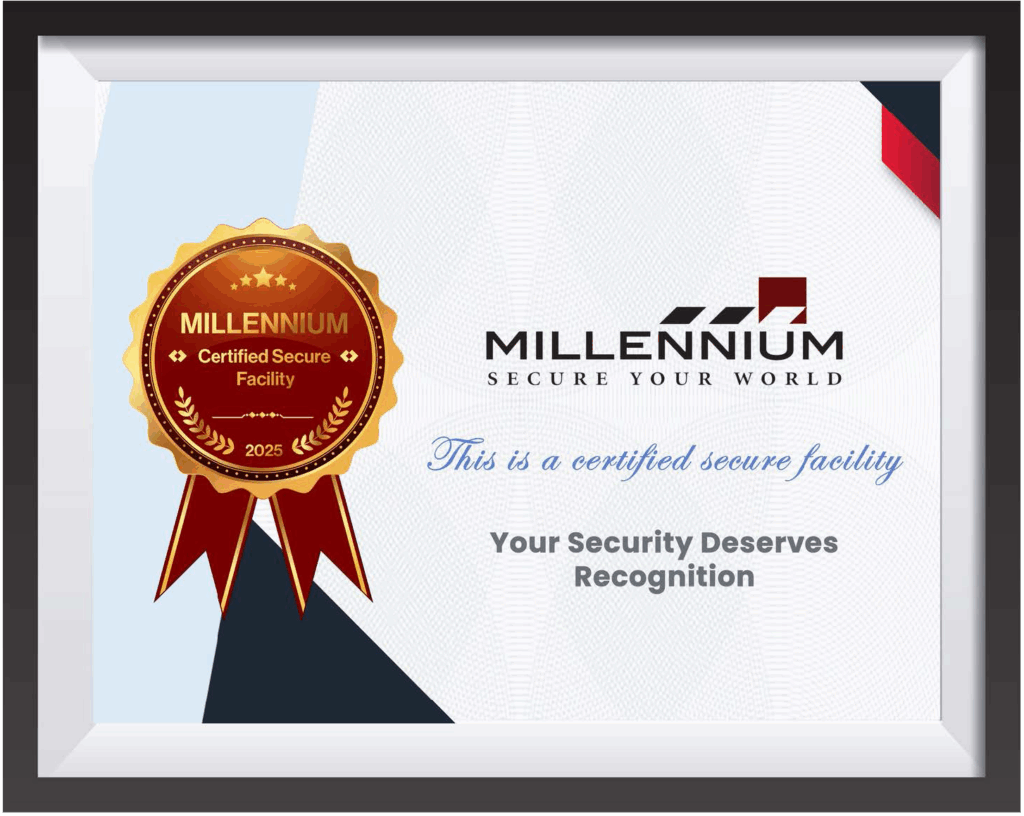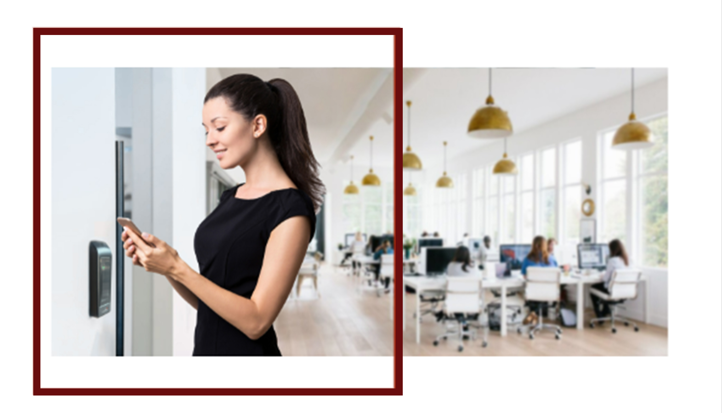A Complete Guide to Parking Access Control System
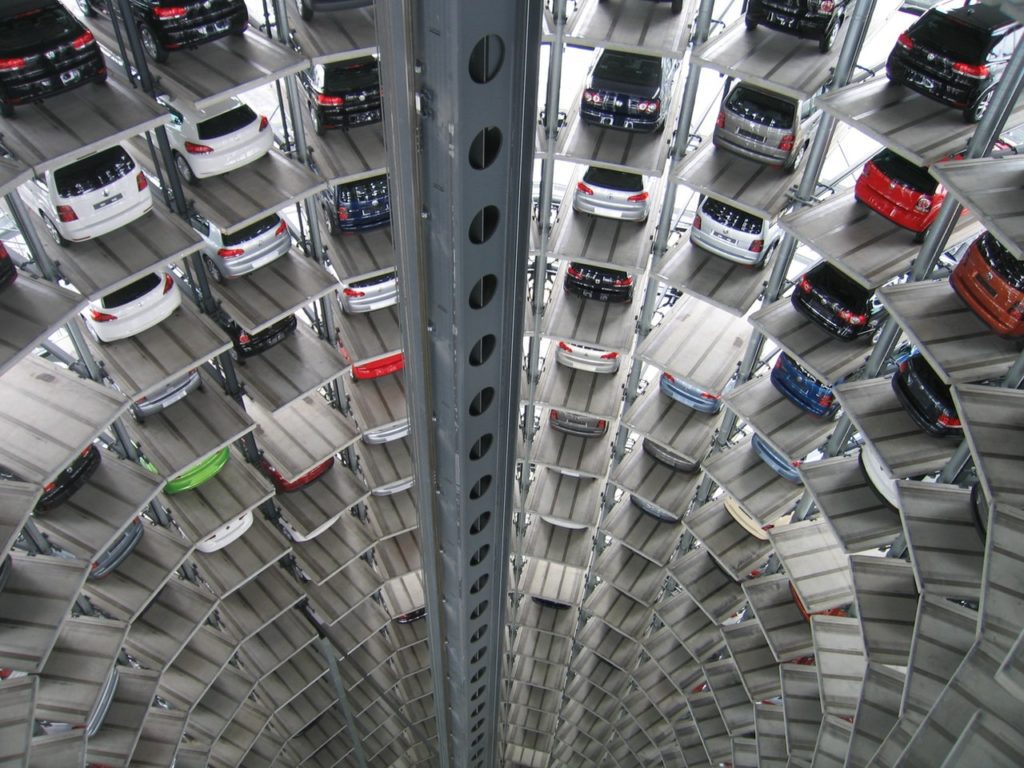
Updated on December 9, 2024 Managing parking facilities is a complex task, requiring efficient systems to regulate the influx and outflux of vehicles while ensuring security and ease of access for users. Parking access control systems, ranging from manual management to fully automated solutions, are designed to address these challenges effectively. This comprehensive guide explores key aspects of parking access control systems, their benefits, and various technologies that have transformed parking management in recent years. What is an Automated Parking Lot Access Control System? An automated parking lot access control system is a solution that enables facility owners to manage parking operations efficiently, restrict unauthorized access, and generate revenue. These systems rely on a combination of physical access control mechanisms, credential management, and integrated payment solutions. Automation introduces significant advantages, such as reducing operational costs, enhancing security, and improving user experiences. Automated parking systems typically use ticketing machines with barcodes, QR codes, or magnetic strips, paired with software for seamless tracking and management. Whether through fully automated systems or hybrid solutions incorporating human oversight, automation ensures a safe, efficient, and user-friendly parking experience. Types of Parking Lot Access Control Systems Key/Remote Access This traditional system works well for long-term users but presents challenges for short-term users. The potential for key loss and unauthorized use makes it less secure compared to modern solutions. Keycard or Key Tag Access Similar to key-based systems, keycards offer enhanced security by allowing administrators to deactivate lost or stolen cards. This method is suitable for both permanent and mid-term users, especially in commercial settings. Keypad Entry Keypads grant access using personalized or general codes. Their flexibility and ease of installation make them a popular choice for short-term users, such as visitors to residential complexes or offices. Codes can be programmed for limited time use and deactivated as needed. License Plate Recognition (LPR) LPR technology uses cameras to read and verify license plates, allowing seamless entry for registered vehicles. This method eliminates the need for physical credentials and simplifies tracking time spent in the facility. Phone Number Recognition Users call a designated number to trigger gate access, ensuring only verified individuals gain entry. This system works well for all types of users, from short-term visitors to long-term tenants. Mobile App or Mobile-Based Access and Contactless Mobile apps have become integral to modern parking systems. These apps allow users to access parking facilities via mobile-based credentials, providing a highly user-friendly solution. Additionally, the inclusion of contactless functionality ensures a smooth and secure experience by enabling proximity-based access, where users don’t need to physically touch any devices. This system is becoming increasingly popular for its convenience, especially for short-term and transient users. Advantages of Automated Parking Access Systems Automated parking lot access solutions offer several advantages over traditional methods, making them a smart investment for facility owners: Enhanced Operational Efficiency By replacing manual processes with automated systems, parking facilities can streamline operations, reduce wait times, and eliminate bottlenecks at entry and exit points. Cost Reduction Automation minimizes the need for on-site staff, lowering payroll expenses. Machines efficiently handle ticketing, traffic direction, and payment collection. Increased Revenue Integrity Automated systems reduce revenue leakage by preventing employee-related thefts and mitigating errors in manual transactions. Comprehensive Data Insights Automated systems maintain detailed records of all transactions, offering valuable data for analytics. Facility owners can use this information to identify trends, optimize parking capacity, and enhance decision-making. Improved Security Advanced access control mechanisms like LPR and RFID technology ensure that only authorized vehicles gain entry, reducing the risk of unauthorized access and related incidents. Choosing the Right Parking Lot Access Control System Selecting the ideal system depends on the unique needs of your parking facility. Factors to consider include: User Base: Assess whether your users are short-term visitors, long-term tenants, or a mix of both. Security Requirements: Prioritize systems like LPR or RFID for high-security locations. Ease of Use: Ensure the system is intuitive and accessible for all users, including those unfamiliar with advanced technology. Scalability: Opt for solutions that can grow with your facility’s needs, accommodating increased traffic or expanded services. By aligning your choice with these factors, you can create a tailored parking access solution that balances security, efficiency, and user satisfaction. Innovations in Parking Lot Access Control Technology The parking industry has witnessed remarkable technological advancements in recent years. These innovations aim to enhance the user experience, boost efficiency, and ensure sustainability: Cloud-Based Parking Management Cloud-based platforms offer centralized management of multiple parking facilities, enabling real-time monitoring and remote control. This approach enhances scalability and reduces the need for on-site infrastructure. Smart Sensors Smart sensors embedded in parking spaces detect vehicle presence, providing real-time availability updates to users via mobile apps. This feature reduces the time spent searching for parking spots. Mobile Integration Mobile apps have become integral to modern parking systems, offering features such as digital payments, navigation to available spaces, and reservation management. Renewable Energy Solutions Sustainable parking facilities now integrate renewable energy sources like solar panels to power access control systems, lighting, and EV charging stations. Advanced Analytics Data analytics tools analyze parking patterns, helping facility owners optimize space usage and implement dynamic pricing models to maximize revenue. Real-Life Applications of Parking Access Control Systems Parking access control systems are deployed across various sectors, demonstrating their versatility and impact: Corporate Offices Automated systems streamline employee parking, reducing entry times and minimizing delays. Advanced features like LPR ensure secure access for registered users. Residential Complexes Secure access control mechanisms, such as keypads or phone recognition, offer convenience and safety for residents and visitors alike. Commercial Parking Lots Dynamic systems handle high traffic volumes efficiently, incorporating automated ticketing and payment solutions to optimize operations. Healthcare Facilities Hospitals and clinics benefit from smart parking systems that prioritize patient and staff access while accommodating emergency vehicles. Educational Institutions Universities use automated parking solutions to manage large student and staff populations, ensuring organized and secure parking facilities. Future Trends in Parking Lot Access Control As urbanization and technology
Elevator Access Control Simplified: A Comprehensive Guide
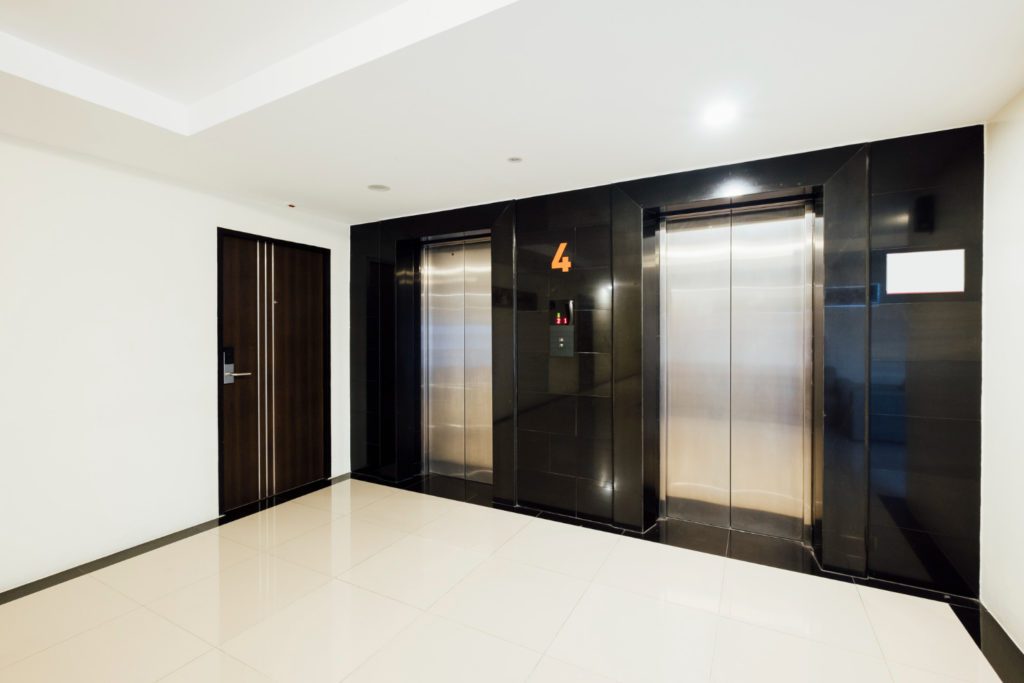
Updated on December 9, 2024 In modern building management, elevator access control has become essential to secure and restrict movement within multi-floor facilities. Unlike conventional access control, where authorized users simply open doors, elevator access control directs movement through multiple building levels, limiting floor access to only those permitted. This guide delves into the mechanics of elevator access control, including how it works, types of systems, credentials, configurations, security challenges, and evolving cloud-based technologies. With this knowledge, building managers and property owners can elevate their security measures to enhance building convenience and safety. Deciphering the Functionality: An elevator access control system relies on three main components: Elevator Control Buttons: Used to open and close doors, make emergency calls, and select floors. Access Readers: These devices, using RFID, keypads, or biometric scanners, verify that users have the proper credentials to access specific floors. Access Control Panel: This control hub manages user data and permissions, typically as an on-site server or through a cloud-based solution. Together, these components ensure that only authorized personnel can access certain floors, promoting security and safety in sensitive areas like office buildings, medical facilities, or high-rise residential complexes. Streamlined Usage Instructions Using elevator access control is straightforward. Upon entering the elevator, a user presents their credential—be it a keycard, mobile phone, PIN, biometric scan, or one-time code. If authorized, the system allows the elevator to move to the designated floor. Unauthorized users will be restricted from selecting or accessing restricted floors. Types of Elevator Access Control Credentials To accommodate various security needs and user preferences, elevator access systems support different types of credentials: Mobile Credentials: Allows users to access floors by tapping a mobile device, reducing the need for physical keys or cards. Keycards, Fobs, or Badges: The most common credentials, these provide reliable access when swiped or tapped. PIN or Passcode: Ideal for temporary or multi-user access, users enter a code to gain access to specific floors. One-Time Code: This credential type is ideal for one-time visitors, such as deliveries, allowing managers to provide a temporary access code that expires after use. Biometric Access: Uses unique user data, like fingerprints or facial recognition, to ensure high-security access. Configurations of Elevator Access Control Systems Elevator access control can be customized to fit specific building needs. Here are four common configurations: Private Elevator for General Access: Users require authorization to summon the elevator but can access any floor freely once inside. Public Elevator with Restricted Floor Access: The elevator can be called without restrictions, but access to certain floors requires credentials. Private Elevator with Selective Floor Access: Users need authorization both to call the elevator and to access specific floors. Destination Control System (DCS): This advanced system allows users to select their destination on an external panel, which optimizes elevator usage based on the scanned credential, directing users to specific elevators. The Rise of Cloud-Based Elevator Access Control With remote work and evolving security needs, cloud-based access control systems are gaining popularity. These systems allow remote management and monitoring, making them ideal for multi-location building owners and property managers. They also support seamless updates and scalability, adapting easily as buildings add new floors or tenants. Popular Cloud-Based Options Include: Single Elevator Access Control: A cost-effective solution for small buildings or residences. Elevator Banks: Suited for high-rise commercial buildings where multiple elevators serve various floors. Smart Elevators: Integrates multiple elevators into a centralized system, ideal for office towers where efficient elevator use is essential. Expanded Security Enhancements Modern elevator access control systems offer enhanced features to ensure both convenience and heightened security: Time-Based Access Permissions: Limits floor access to specific hours, suitable for facilities with restricted visiting hours. User Logging and Reporting: Tracks access attempts and movements, providing insights for security audits. Anti-Passback Technology: Ensures credentials can’t be reused immediately, reducing the risk of “tailgating” unauthorized entry. Integration with CCTV: Pairs elevator access logs with real-time video, allowing security teams to monitor and respond to potential threats efficiently. Detailed Challenges and Solutions in Elevator Access Control Elevator access control faces unique challenges due to frequent public use and the potential for security lapses. Here’s a look at some common issues and solutions: Tailgating: One of the most common issues, tailgating involves unauthorized individuals entering behind an authorized user. Anti-tailgating technology and clear user guidelines can help mitigate this risk. System Failures: Elevator access systems must remain operational even during power outages or software failures. Back-up power sources and fail-safe protocols can keep elevators running in an emergency, ensuring user safety. Credential Security: Lost or stolen credentials, like cards or mobile devices, can compromise security. Multi-factor authentication and biometric credentials offer additional protection by tying access to a user’s unique characteristics. Technological Advancements in Elevator Access Control In the ever-evolving landscape of building security, modern elevator access control systems integrate cutting-edge technologies to help overcome common security challenges. Here’s how these systems integrate with other technologies to enhance reliability and security: Mobile Access Control Integration: Mobile access control systems enable building managers to remotely grant access to elevators using mobile devices. This capability is especially useful in managing visitor access and responding to emergencies quickly, all without the need for physical presence on-site. Video-Based Analytics Integration: Advanced access control systems integrate seamlessly with video surveillance, using video-based analytics to detect unusual behavior patterns near elevators. By analyzing real-time footage, the system can identify potential security threats, alerting personnel to suspicious activities, and allowing for quicker response times. This integration also allows for footage to be linked directly to specific access events, simplifying the process of security review and incident management. Tenant Management Module: Access control systems offer robust tenant management features, enabling multi-tenant buildings to customize and streamline access for each tenant. This module ensures that tenants can only access floors or areas relevant to their needs, minimizing security risks and ensuring that authorized personnel have controlled access across different building levels. Visitor Management Module: A visitor management module integrated with the
Why Is Millennium Ultra Considered One Of The Best Security Systems In The USA?

Millennium Ultra Software has been hailed as a comprehensive and robust door security system in the USA by many experts and end-users.
Elevator Trends: Progression of Stairwells From Mechanical to Automation and Advance Security
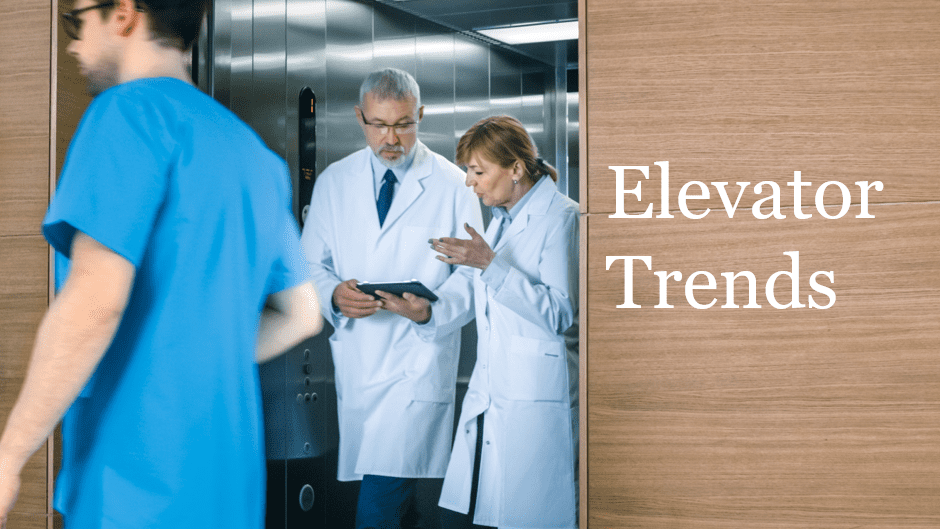
Simple transportation machinery was invented in 1743, and its modernization began in the 19th century. The older elevators were mechanical, of lower quality and they were operated by either being pulled by an animal or a semi-motorized assembly controlled by humans. Belt-driven elevators were used in the beginning, later elevators used steam engines and even oil-water hydraulic systems. Now, with coming of age, we have advanced, connecting skyscrapers, floors after floors with the help of the automated elevator technology and also doubling up with the integration of security systems both inside and outside the elevators. We are building more and more skyscrapers than ever before. Therefore, the use of elevators in those structures is increasingly growing. As a result, the usage of access control and security systems has risen significantly. Hotels, offices, hospitals, and even malls have begun to integrate the use of access cards for their guests and employees, and elevators are now equipped with surveillance cameras to avoid any unforeseeable and inhuman incidents. According to research, the demand for elevators has increased, and with it, the demand for access security systems has increased as well. What’s New and Trending in Elevator Security? With the modernization of the elevators, new security specifications are being added to the software to make them more robust and flexible to meet the changing access control needs in buildings. Millennium spent more than two decants in R&D to understand the ever-shifting needs of the customers and constantly upgraded itself in the elevator industry. This led MGI to integrate the new elevator technology with the trending elevator security system that stood the test of time for the last 25 years into launching advanced elevator security that is both hardware reliable and allows seamless software integration. The new elevator features are: The hardware components of the board are of top quality. Millennium provides a relatively compact design with a faster and better working unit. Millennium has reduced the size of its part as hardware has improved, resulting in a design that is condensed and simple to install. As the processor used by the MGI is quick and steady, it ensures easy and fast updates to the hardware, making it smooth to operate. How to choose the best Elevator Access Security Solution? In order to choose an access security solution that perfectly fits your requirements, you must look for the following features: Ease of Use: In all workspaces, user-friendly equipment is favored. The convenience decreases complexity and also saves time. Taking this into account, Millennium provides its customers with a variety of pre-engineered boards that are lightweight, pre-wired, feature with the latest hardware, and are relatively simple to mount and install. Flexible: This is a critical element. A better user interface leads to better results and reflects the flexibility of the product. Millennium’s software called Millennium Ultra 5.0.0 is smart and performance-driven. In addition, the software added the following new features: Network addition for compatibility (coming soon) Smoother working with or without a network connection New design to integrate multiple boards together Reliable: It is an important factor when choosing a security system. Millennium’s Elevator hardware system security has proven to be reliable and is still the most desired solution in the market, acknowledged by the dealers. New products are released with the same reliability as older products, and all of the previously popular features are improved and reintroduced in the newer products. MGI stands out in the elevator industry due to the high quality and specifications of its goods. They design software-integrated elevators that are simple to operate and provide the best results. The software they use is backward compatible and offers the most versatility. The installation is easy, and these elevator systems provide the highest level of reliability. With all of these facilities in place, MGI makes a strong impression on the industry. Read more about: Hardware Reliability in Access Control Smartphone door open system- Mobile Connect Cloud-hosted access control CCTV video software integrations Biometric door open systems
Reduce Theft in Your Retail Store With Access Control

More than a dozen states began emerging from their coronavirus lockdowns, leaving business owners, workers and consumers to decide what normal means now. Unfortunately, before the pandemic retail stores have always been vulnerable to theft and are still much vulnerable. That’s because these stores have two things every thief wants in a hurry: valuables and cash. However, retail store owners/managers can easily fight back against theft by implementing certain security measures and protocols. An Access control is used to identify an individual, authenticate them, and then permit the individual entrance. Here are some security measures that retail stores should implement include: • Installing security cameras• Using security mirrors• Installing entrance alert sensors• Training employees• Posting signage Throughout this blog, we’ll closely look at each of these security measures and how they can help to reduce theft in retail stores. Security measure #1: Installing security cameras Security cameras help you keep an eye on the entire store, whether you’re on property or not.Depending on your business needs, you can choose to simply steam video footage in real-time to help you monitor and catch any theft as it happens or you can record and store footage to help authorities track down thieves after the crime is committed. Cameras that are placed in highly visible areas where they can be seen by potential thieves/shoplifters can help prevent crime before it ever occurs. Security measure #2: Use security mirrors No matter how big or small the space, your retail store likely has multiple “blind spots. Strategically-placed security cameras can help you keep an eye out, even when you’re busy helping other guests. These round/dome-shaped mirrors (often called convex mirrors), allow you to see hidden or hard-to-see areas that would normally be out of view. These mirrors also help deter thieves from committing crimes by placing their every move on display. Security measure #3: Install entrance alert sensors Entrance/exit alert sensors have two clear advantages:They let your staff know when someone enters the store so that they can be visible and vigilantThey alert potential shoplifters to the fact that their presence is known, which makes them less likely to steal in the first place The last thing any thief wants is attention. These sensors work by projecting a loud chime or bell noise when it senses some entering or exiting the store. This prevents potential shoplifters from slipping in/out unnoticed and will make them think twice about attempting any sort of theft. Security measure #4: Train employees All staff members should be trained on how to spot and respond to theft. With everyone on the same page and knowing what to look for, stores stand a better chance of effectively combating theft.A few common practices employees should learn in order to prevent theft include:Being extra vigilant during busier hoursClosely monitoring customers with backpacks, bulky clothing or large handbagsTaking notice of customers who seem to be more focused on watching employeesLooking for signs of nervousness or odd behaviorCasually approach any suspicious customers and offer assistance Security measure #5: Post signage Posting anti-theft signs lets thieves and customers know that the store is under constant watch/surveillance. This can be a cheap and very effective way to discourage theft.Keep in mind, though, that it’s important to place these signs strategically, where they can’t be missed. Placing signs right on the front window/door as well as in dressing rooms or back areas/hard-to-monitor places in the store is a good start.You can typically purchase anti-theft signage from any security company or you can make them yourself (to save money). However, beware of any copyright infringement if you make your own signs. Security measure #6: Keep the store organized Shoplifters love disorganized stores because it makes it very hard for staff to quickly spot missing items. That said, it’s in your best interest to maintain a neat and organized shop.When your store is organized, potential shoplifters will be less likely to take an item, for fear that staff will quickly notice missing items. Choose Millennium Group Inc. to provide you with the best Access Control System for your organization.
Importance of Hardware Reliability in Access Control
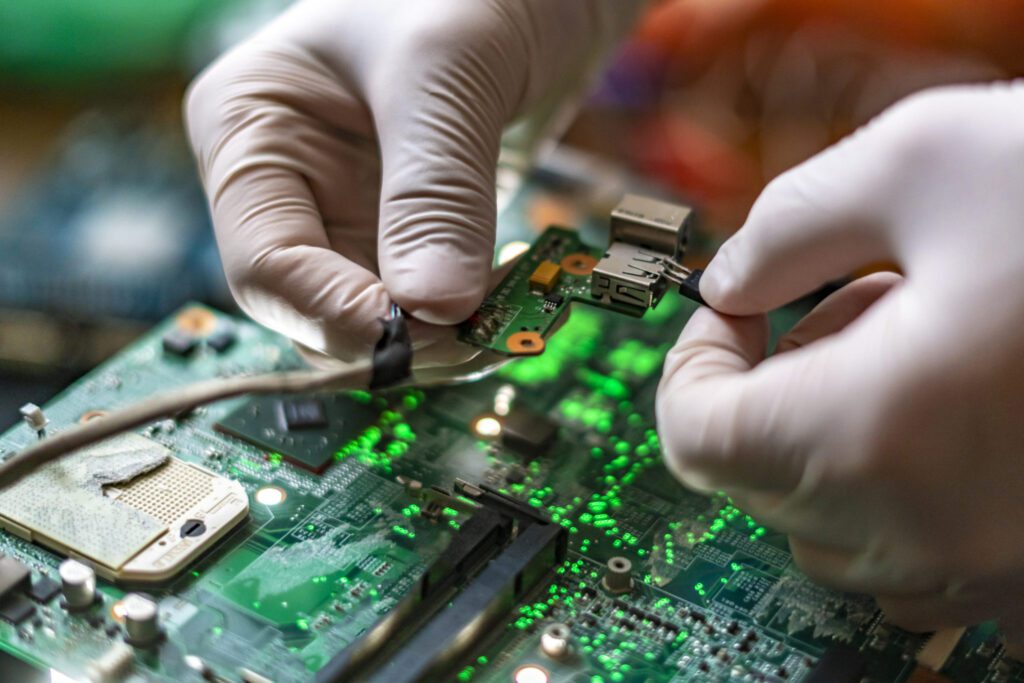
Hardware reliability is the need of the hour Have you ever purchased a door access control system that always use to give a functional problem, never open when you swap a door reader because the door hardware was defective? Or the elevator encountered some hardware malfunction which led to severe inconvenience for you and your office employees. These are some of the common hardware issues that we come across in our day-to-day life which in turn hamper our productivity and further provide discomfort and compromises our security. Situations like these call out for reliability. The hardware that can perform and is valuable in proportion to the dollar spent purchasing it. Hence, hardware reliability is the need of the hour. It enables the employees and people to continue to use office or building access without issue and to do their jobs competently. Role of Hardware and Software Integration: The performance of a specific access control device is based on its absolute reliability and precision, and if there is some form of latency or fault in the hardware, it becomes extremely difficult for consumers to have an efficient security system installed in their spaces. In the case of dependable hardware, one can add new parts to the panels to add new features and make them easier to use. Moreover, any access control has both software and hardware, and for software to operate smoothly, the hardware must also perform properly, this is where hardware reliability and integration comes into play. Proper device integration helps in connecting software to hardware in a seamless manner. Hence, there is a great role of hardware reliability and integration in access control as the more the assembly functions properly, the easier it gets for the user. In addition, this leads to a good customer and brand relation. The Right Software Integration Solution: This technical era is not just all about properly functioning hardware, rather it is more focused on the convenience and ease-of-use of the device. Companies are working hard to develop their user interface because software is critical to improving the product’s experience and performance. Not to mention that a device with good usability and consistency has higher reliability. Millennium has a fantastic solution for this. The business provides excellent software like Ultra 5.0.0 that greatly benefits its customers and its backward hardware compatibility. The software is programmed in such a way that it can operate with older hardware as well, so even if a consumer has an older version of the hardware, simply updating a few pieces, the software will provide them with the best possible results with their pre-installed devices. Access Control Hardware Solution: The access control market provides various hardware options to suit your needs, but the Pre-Engineered Hardware system works best in terms of reliability and functionality as it comes with pre-fixed wiring and ready to use. For instance, your requirement for a wireless door access control system can help in securing the entrance of your schools, hospitals, and office space effortlessly with the assistance of the pre-engineered hardware solution provided by Millennium. Furthermore, talking about the value of the hardware, Millennium’s Elevator hardware system security has proven to be reliable for more than 25 years and is still the most desired solution in the market by most of the dealers. Now, with the coming of the new era, MGI decided to expand its more than two-decade-old knowledge with the added expertise and launch a New Elevator Hardware that proves to be a perfect blend of the past, present, and future elevator security demands. Looking at this surge in the demand, Millennium Group Inc., is currently offering free practical training for their access control products. It is starting with ‘New Elevator Hardware Training’ where a live session will be conducted on ‘New Elevator Hardware Best Practices’ to help you understand the system set-up, installation, and programming processes. Training starts at 2:30 pm on Wednesday, May 26, 2021. You can click here to register for the free training on the New Elevator Hardware Best Practices. Read more about: Smartphone door open system- Mobile Connect Cloud-hosted access control CCTV video software integrations Biometric door open systems Alarms and emergency notification integrations
Why schools should switch to Mobile Credentials during the Pandemic

Year by year our dependence on mobile technology continues to increase. It is the start of a new decade and definitely, technology will upgrade. As our society becomes more reliant on mobile technology, adopting mobile credentials into your security system can make your facilities be more reliable, run efficiently, and provide a great experience. According to the CDC, an individual may get COVID-19 by coming in to contact with a contaminated surface or device, and then touching their mouth, nose, or eyes. Smartphone credentials limit contact for access control to a smartphone typically touched and used only by its owner. Granting access to secured places requires the administrator’s presence. This can be difficult or frustrating for both the user and the administrator. Mobile Connect makes it easy to command the card/phone readers. Authorized personnel can log in, unlock doors grant or revoke access to a specific location from their comfort zones. Mobile Connect provides increased security, enables ease of operation and the flexibility to easily access doors by approved users. All Mobile Connect credentials are securely managed through the Millennium software platform and are easily assigned through the administrator to all mobile-enabled teachers, students or employees in a school. We provide customized access control systems for primary, secondary, and post-secondary educational institutions. Access control for educational institutions often come with special integration requirements for components such as student IDs. At Millennium Group, we work hard to accommodate your unique range of access control requirements and can implement systems based on the different types of users and their status and permissions within the school. In these turbulent times, however, we strongly recommend our Mobile Connect system. Choose Millennium Group Inc. to provide you with the best Access Control System for your organization.
The Essential Need for Healthcare Access Control Solutions

In today’s dynamic healthcare environment, ensuring the safety of patients, staff, and sensitive information is more critical than ever. Hospitals and healthcare facilities face unique challenges, requiring comprehensive security measures to address physical and digital vulnerabilities. This article explores the pivotal role of healthcare access control solutions and hospital security systems in safeguarding these vital institutions. The Vulnerability of Healthcare Facilities Hospitals are bustling environments where the safety of patients and staff is paramount. Patients rely on a secure setting to aid their recovery, while staff members need a safe workplace to provide optimal care. The complex and open nature of healthcare facilities makes them susceptible to various security risks, ranging from unauthorized access to sensitive areas to the protection of confidential patient information. Key Components of Healthcare Security Systems Comprehensive Healthcare Access Control Solutions Access control systems for healthcare and hospital facilities provide tailored solutions to address the specific needs of hospitals. By utilizing advanced credentialing systems, hospitals can regulate access to restricted areas such as operating rooms, pharmacies, and data centers. These systems ensure that only authorized personnel can enter sensitive zones, reducing the risk of unauthorized access. Integrated Surveillance Solutions Hospital and healthcare security systems often combine access control with video surveillance to provide a robust security framework. CCTV cameras monitor real-time activities, while integrated systems allow for seamless synchronization between access events and visual recordings. This enables security teams to verify incidents quickly and respond effectively. Mobile and Contactless Access Modern healthcare access control solutions prioritize convenience and hygiene through mobile and contactless access options. Smartphones, wearables, and biometric credentials replace traditional keys and cards, enabling secure and efficient entry. These technologies also support dynamic credential management, allowing hospitals to update access rights instantly. Multi-Factor Authentication (MFA) To bolster security further, MFA combines two or more verification methods, such as PINs, mobile credentials, and biometrics. This approach ensures that even if one credential is compromised, unauthorized access is thwarted. Addressing Digital and Physical Security Protecting Patient Information The digital age has brought heightened concerns about data breaches. Hospital security systems must comply with regulations like HIPAA to safeguard electronic health records (EHRs) and other sensitive information. Healthcare access control systems integrated with cybersecurity measures provide an additional layer of protection for patient data. Emergency Preparedness Healthcare facilities must be prepared for emergencies, including natural disasters and security threats. Healthcare access control solutions facilitate quick lockdowns, ensuring that critical areas are secured instantly. These systems can also integrate with emergency communication platforms to provide real-time updates and instructions. Benefits of Advanced Hospital Security Systems Enhanced Patient and Staff Safety By implementing healthcare access control solutions, hospitals create a safer environment for everyone. Controlled access reduces the risk of intrusions, while surveillance systems deter criminal activity and provide evidence in case of incidents. Operational Efficiency Automated access control systems for hospitals streamline administrative tasks, such as managing visitor passes and scheduling access rights. This allows hospital staff to focus on their core responsibilities without compromising security. Regulatory Compliance Access control systems for healthcare and hospital facilities ensure adherence to industry regulations. By maintaining detailed logs of access events, hospitals can demonstrate compliance with audit requirements and avoid potential penalties. Customizable Solutions for Unique Needs Millennium Group Inc. provides customizable hospital security systems designed to meet the diverse needs of healthcare facilities. Our solutions include: Cloud-based healthcare access control solution for centralized management. Video-integrated systems for enhanced situational awareness. Mobile credentialing for flexible and hygienic access. Automation and analytics to streamline operations. Ready to enhance the security of your healthcare facility? Contact Millennium Group Inc. today to learn how our healthcare access control solutions can safeguard your patients, staff, and sensitive information. Let’s build a secure future for your organization together. Millennium is a scalable, hosted, access control platform that services any type of real estate. Our cloud-based solution allows managers and tenants to efficiently manage their physical security from anywhere while enhancing experience and driving profitability.
The Power Of Mobile Credentials: 3 Great Reasons To Switch
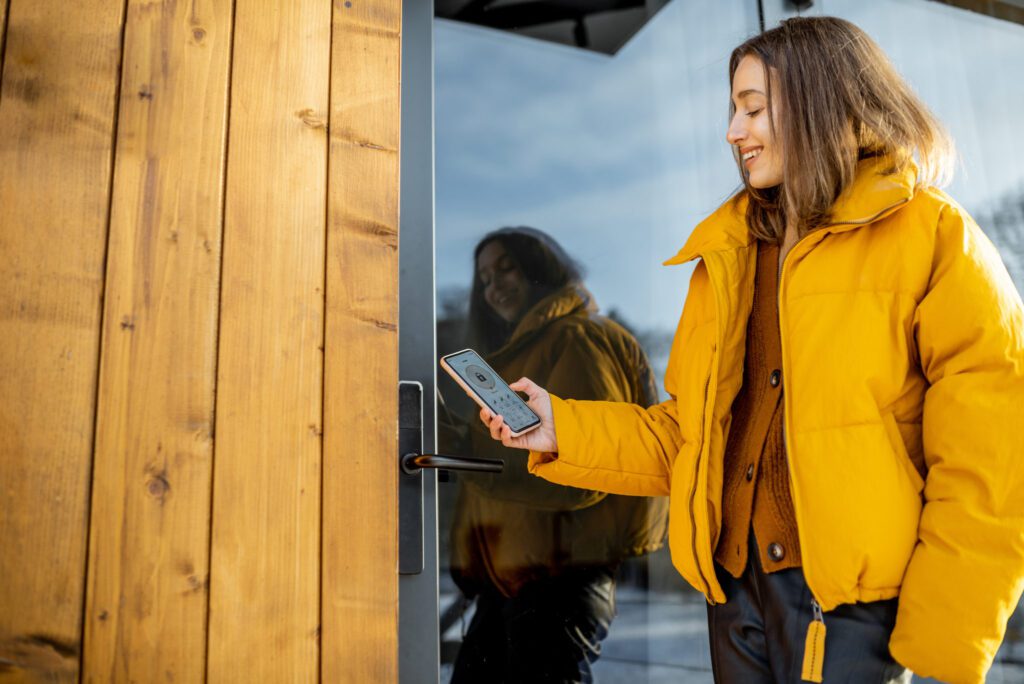
Our society’s reliance on mobile technology is ever-growing, and as we enter a new decade, mobile technology becomes an integral part of our daily lives. Embracing the power of mobile credentials in your security system can enhance the reliability, efficiency, and customer experience of your facilities. Here are three reasons to adopt our Mobile Credentials: 1. Grant Guests Temporary Access Every facility receives guests and visitors, and providing them with temporary access can be a complex process. The traditional method of creating access key cards consumes time and effort. However, with the introduction of mobile credentials like Millennium Mobile Connect, you can effortlessly grant temporary access to all guests. The system allows you to customize schedules and access level permissions, ensuring guests are limited based on the criteria you set. 2. Convenience for Administrators and End-Users Certain facilities require an administrator’s physical presence to grant access to secured rooms, leading to time loss and frustration for both customers and administrators. Millennium’s Mobile Connect Credentials solves this problem by enabling remote door opening and access granting. Authorized personnel can log in from anywhere and conveniently unlock doors or revoke access to specific locations. 3. Prioritize Favorite Locations Millennium Mobile Connect empowers users to prioritize their frequently used doors, creating a personalized experience. The app allows customization based on preferences, making door access unique for each individual. As mobile technology advances, so does access control technology, making authorization, permissions, and door control highly flexible. The use of encryption and secure connections on smartphones ensures that Millennium Mobile Connect is a secure solution. Users can enjoy peace of mind, knowing that their information is safe, and they no longer need to worry about losing keys. Secure your facilities and embrace the future of mobile credential technology with Millennium‘s cutting-edge Ultra Mobile Connect. Click here to install the app.



